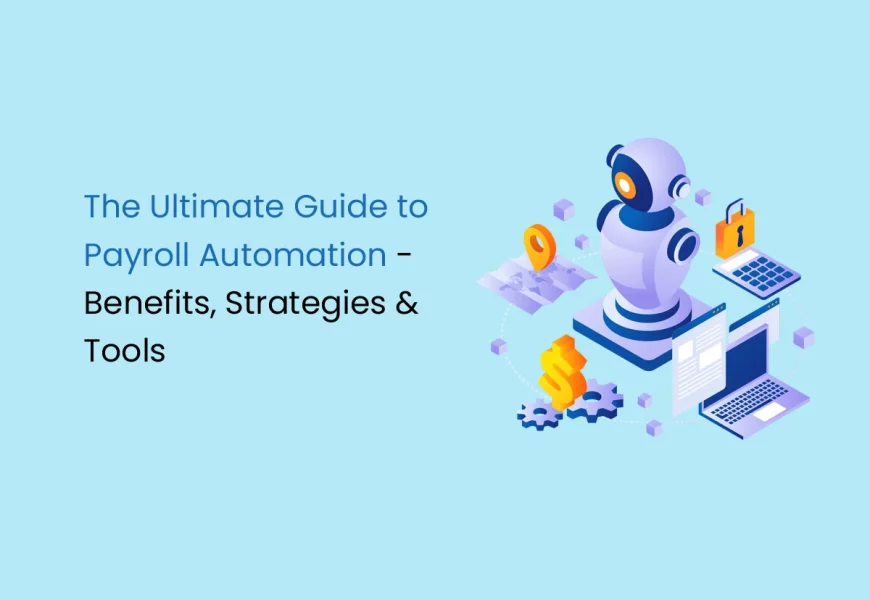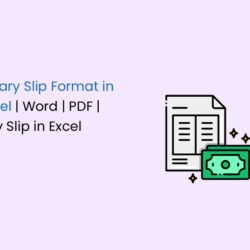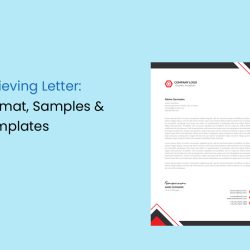Manoj, the HR manager, at a mid-sized company is hustling in making salary list in the last week of the month. And not only this, an HR manager has multiple responsibilities to work on such as hiring, employee onboarding, engagement, and benefits management. And adopting the traditional payroll method can be tiring, error-prone, and time taking tasks. With many technical solutions in the market, companies seek solutions to operate their businesses smoothly, reduce admin tasks, and boost employee productivity and experience. Managing payroll is one of the significant tasks and is no exception. Traditional payroll methods are time-consuming, chances of errors are higher, delays are common, and they are inefficient. Employees expect that their salary is credited accurately and on time. And employers look for a seamless solution for compliance and admin tasks. That is where payroll automation comes in to simplify handling salaries, tax compliance, and financial reporting.
What is Payroll Automation?
Payroll automation is a technical solution that easily handles payroll related tasks like salary calculations, tax deductions, managing compliance, and any compensation. Manually working on payroll can be time consuming so instead of that companies can use software that ensures accurate, and timely payroll processing. Companies can experience less errors, minimal administrative tasks, compliance with taxes, and labor regulations by implementing payroll automated system. A well integrated payroll software will eventually enhance employee experience by crediting salaries accurately and on time, digital payslips, and a seamless approach within the organization.
Payroll Automation Processes
Automating payroll is not a complex task; it involves integrating digital tools that handle and manage different aspects of salary. A payroll system manages workflow well, minimizes error, and boost efficiency. Companies must ensure that they follow a well structured approach to implement payroll automation. Below are some of the critical steps to follow to implement payroll automation.
Defining Payroll Policy
Companies shifting to automated payroll from manual payroll must have a definite payroll policy. The policy must have a clear and complete information about salary structure, tax deductions, benefits, overtime and compensation. Make sure that they meet parameters and compliance. Having a well defined payroll policy will be beneficial for both; HR and employees to have transparancy, avoiding any disputes related to salary.
Verify Employee Data
Employee details such as salary structure, tax information, bank details, working hours and days, and benefits which they are eligible for must be recorded and updated regularly. Payroll automation ensures that all these data are accurate, collected efficiently and secured confidentially. Also it makes sure that the data is synchronized without any discrepancies. Instead manual methods have high chances of duplicacy and are prone to mistakes.
Payroll Calculations
Now the employee data is submitted, the software will automatically calculate the salary, deductions, bonuses, overtime and eligible taxes. Manual method involves meticulous calculations consuming so much time of HR team, instead payroll automation ensures to have a accuracy in payroll eliminating errors and cross verification. Automated payrolls can easily manage complex salary structures, including multiple allowances, reimbursements, and tax deductions.
Payout
Post calculation is done, it now time for salary disbursements. Payroll software ensure that salary are accurate and on time through direct bank transfers, digital wallets or any other mode of bank transfer. The employee will receive the salary on time without any error directly to the bank account with digital payslip.
Adhering to compliance
Processing payroll of the employees involves complying with eligible taxes. The software automatically applies eligible deductions, generates tax reports, and submits tax returns on time. To ensure that no business is without following compliances, automated payroll systems keep updated with changes in labor regulations without any manual tracking.
Management Reporting
Management reporting is detailed report on payroll expenses, employee compensation trends, tax deductions, and compliance status. With this report, businesses can also have a transparent and clear details about finances to plan better workforce planning and financial forecasting.
Why Move Away from A Manual Payroll System?
In the digital age, manual payroll system yet being a traditional approach still has many disadvantages resulting in impacting business efficiency. Some of the disadvantages of manual payroll system are:
- Prone to Errors: Manual payroll are tend to mistakes like tax miscalculations, compliance issue and of course incorrect salaries. A single error in calculation can lead to major financial discrepancies.
- Frequent Bottlenecks: Manual payroll is a time consuming tasks for HR teams specially if its a large company. Manually calculating salaries, cross verifying it, and then ensuring the timely release of salary seems a difficult task.
- Higher Costs: Managing payroll manually requires administrative efforts increasing the count head of HR and finance departments. Rather than this company can implement payroll automation which will reduce this increased costs and minimizing any error.
- Risk of compliance: While processing payroll a slight mistakes in compliance can lead to big fine and legal issues. And manually keeping update with compliance and laws is a challenging tasks.
- Risk of data breach: Manually handling the payroll data has the higher chances of unauthorized access and mismanagement of documents. Payroll software protects the employees’ sensitive data.
Advantages of Payroll Automation
- Faster Speed: Employees expect their salaries disbursements on time without any delay which will eventually keep them boosted. Payroll softwares offers speed for payroll processing, ensuring accurate salary disbursements without any delays.
- Accuracy: Calculating payroll manually increases the chances of mistakes, so automated payroll minimizes mistakes to make sure that employees receive accurate salaries.
- Increased Productivity: Payroll automation enables HR professionals to focus on essential tasks that requires their focus rather than spending hours on calculations and documentation.
- Easily Handling growing business: Automated payrolls’ can easily handle growing workforce without any extra effort on administrative task.
- Data Security: Payroll softwares provide protection of employee data, authorised access, and data backup.
- Deep Insights: Automated payrolls offers deep insights about payroll, workforce costs, compliance and other for better financial planning.
How to Choose an Automated Payroll System
Choosing the right automated payroll system is very crucial in order to enhance employee experience and loyalty, correct compliance with tax regulations, smooth payroll systems, avoid any financial discrepancies and many more. Here are some factors to keep in mind while opting for a payroll automation system:
- Easy Integration: The payroll system must be easily integrated with HR and accounting software. TankhaPay is a payroll automation software that is easily integrated with variety of tools and platforms, including biometric, face recognition, and retina attendance systems, as well as HR software and ERP solutions.
- Compliance with local regulations: A well structured payroll system must support labour laws and statutory compliance requirements. TankhaPay efficiently manages PF, ESI, Minimum Wages, Professional Tax, LWF & Income Tax Compliances.
- Ease of customization: Businesses and HR choose a payroll software that is simple and easily customisable. TankhaPay is curated A simple and customizable payroll software is first choice of HR and businesses. TankhaPay payroll automation is easily customisable to match the company’s policy. Businesses can efficiently manage their employees’ payroll while maintaining internal policies and compliance with regulatory requirements.
- Reasonable costs: TankhaPay is subscription-based payroll software that is quite reasonable.
- Easy to use: The right payroll automation system is that which is user friendly and operates efficiently. TankhaPay software user interface ensures that HR and finance can operate it easily without any hassle.
- Scalability: A payroll system is good when it supports growing business and complex salary structure. TankhaPay also supports small business to large corporates.
Conclusion
Payroll automation is a game changer for businesses and HR to enhance the efficiency, accuracy and compliance with laws. Automated payroll is eventually built to reduce the workload of HR professionals. Investing in software that provides all-in-one HR and payroll solutions is smart move for businesses for effortless employee management.




















